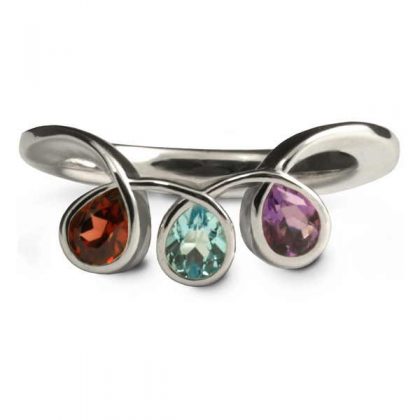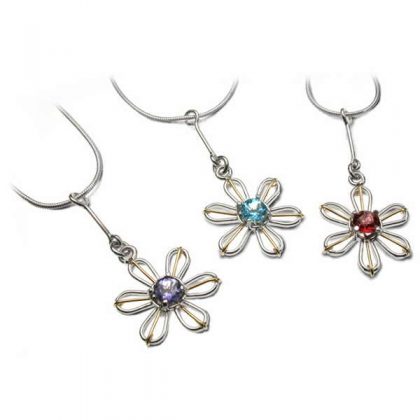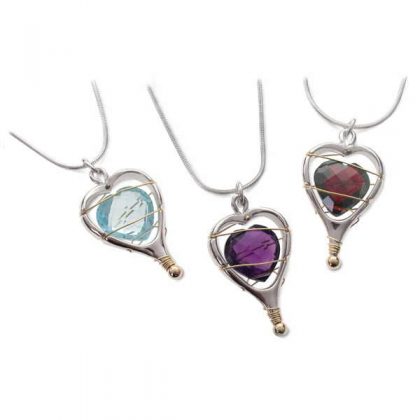Blue topaz
BLUE TOPAZ
Hardness: 8
Birthstone: November
Anniversary: 4th
Topaz is a silicate mineral of aluminium and fluorine. It forms as prismatic crystals in granitic pegmatites and in pockets in metamorphic rocks such as rhyolite. It can be straw coloured, blue, green, pink, orange, brown or colourless. The name is believed to have derived from the Greek work topazos, the ancient name for St. John’s Island in the Red Sea, or from the Sanskrit tapas meaning ‘fire’.
Although the majority of topaz deposits are colourless, traditionally it’s the golden yellow colour that has been prized and, in the past, it was thought that all topazes were yellow and that any yellow stone was a topaz. These days gem specialists respond to these naive beliefs with the technical expression, ‘Durr!’.
In 1740, the “Braganza” diamond (1,640 carats) was found in Ouro Preto, Brazil. It was set in the Portuguese crown, and was thought to be the largest diamond ever found. The fact that it was a diamond was never confirmed, and it is now believed to have been a colourless topaz.
![]() After the colourless stones, blues and greens are the next most common and blue topaz has, in recent years, become very popular as an alternative to Ceylon sapphires.
After the colourless stones, blues and greens are the next most common and blue topaz has, in recent years, become very popular as an alternative to Ceylon sapphires.
Most of the blue topaz on the market, however, wasn’t dug out of the ground looking like that, but has arrived at its colour through being irradiated.
People tend to get a bit twitchy when you’re talking about radiation. I should stress that treating a stone in this way does not leave it radioactive in any way and there is no threat to health.
The process allows the hue of the stone to be very carefully controlled and has led to three distinct colour bands that are used within the jewellery trade:
![]()
London Blue is a deep blue with a greenish tinge
![]()
Swiss Blue is paler but has bright vibrant hue
![]()
Sky Blue is paler still and can be mistaken for aquamarine
Please bear in mind that the colours that your monitor chooses to show you are not necessarily the colours of the actual stones. These images are just to give you an idea of how the different shades vary from each other.
I tend to use the Swiss blue as it has a strong bold colour without the ‘washiness’ of the the sky blue. It does tend to be more expensive though, and so in some designs, such as the Captive Heart (see thumbnail below), I have to settle for the Sky blue or no one would be inclined to buy it. Happily the hearts in this design are large enough to be able to develop and reasonable depth of colour.
You can click the thumbnails below to see a selection of pieces that are set with blue topaz.






